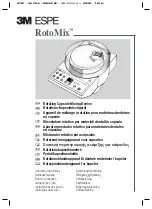
49
5. The compass damping [SEA] setting is a combination of yaw dead-band (compass
sensitivity) and compass damping. The minimum setting may only be used under calm sea
conditions to avoid unnecessary rudder correction due to compass acceleration errors.
Smaller boats and high speed boats which are subject to more acceleration in lighter seas
will have to use higher settings.
Larger and more stable boats can use lower settings since there is less compass
disturbance. Factory default setting should work on most boats in light to moderate sea
conditions.
Following seas, no matter how rough, may require lower settings to catch course error
trends quickly in order to minimise excessive yaw and steering activity.
6. Automatic Trim Calibration [ATC] adjustment is not critical. It constantly compares the
course set against the course steered. The automatic trim slowly applies more rudder as
necessary to reduce any persistant errors to zero. Such errors may exist due to wind,
waves or other unbalanced forces such as single screw operation of a twin screw boat, an
off centre tow or weather helm on a sailing boat. If the trim time is set too high, it will take
a long time to eliminate the course error. If it is set too low it can start to degrade course
stability.
In general, longer trim times (higher settings) should be set for large boats and sailing
boats and shorter trim times (lower settings) for small boats and high speed planning
boats. The factory default setting should be acceptable for all but extreme applications. If
after fine tuning all routines and auto-deviation routine has been done and poor steering is
noted only on some but not all headings, magnetic interference is present which must
either be compensated for by a compass adjuster and/or another compass location must
be found.
Copyright ©:
Silva Sweden AB
Kuskvägen 4, 191 62 Sollentuna, Sweden
Tel: +46 -(0) 8 - 623 43 00. Fax: +46 -(0) 8 - 92 76 01
www.silva.se
FINE TUNING
Содержание AUTOPILOT
Страница 1: ...0 Installation and Operation Manual ...

































